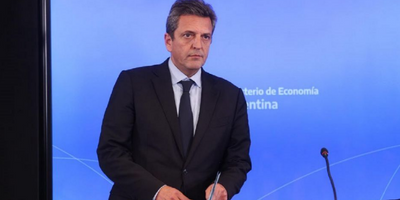Despite the intervention of dollar in the Economy Market , he central bank lost reserves and barely managed to close the official gap.
He Ministry of Economy already spent 37.4% of the billion of international reserves in the repurchase operation announced by the holder of the portfolio, Sergio Massa.
According to private estimates, he carried out transactions for US$374 million as of January 31.
In this regard, the market analyst and economist Salvador Vitelli He pointed out that until moment the 92% of the goods repurchased by the government correspond to securities whose identification code is GD30.
That is, the global title in dollars maturing in 2030, which is the execution of Cash operations with Settlement most used.
The second most important was GD30 to 5% and GD38 and 29 to 1% each.
Although the operation was announced by the masses as a mechanism to improve the maturity profile of dollar debt, in the market it was interpreted as a way to formally demonstrate that the central bank will openly intervene to control the price of the financial dollar.
The truth is that the request for Buyback has caused a lot of controversy inside and outside the country.
Last week it was learned that the leaders of the International Monetary Fund (IMF) They told the Argentine authorities that they would not consent, because the government has very few reserves of cash to finance this operation.

On the other hand, Treasury Palace came out to promote that it has already obtained the approval of two international banks and a sovereign fund for a REPO type credit (Repo) which will allow you access around 2 $500 million to finance the buyback, but that has not happened yet.
The negotiations remain secret.
After purchasing almost US$ 2,000 million in December thanks to the second edition of the “soy dollar”, the dynamics of interventionl BCRA in the MULC presented a break in mid-January, Ecolatina stands out.
The entity commanded by Miguel Pesce sold US$ 476 million on the last 11 laps of January, of the US$ 285 million that he bought in the first 11 turns of the year, and the monetary authority closed the month with a net loss of US$ $191 million was slightly higher than $136 million sold in January 2022.
And in February the problem worsened, because seasonally it decreases weight demand, which is accompanied by a smaller amount of dollars product of the progress of the programs 'soybean dollar'.
“As for a new month, the context shows that the exchange scenario in February is generally more difficult than in January: in 15 of the last 20 years, the BCRA's net balance in the Single and Free Quotation Market (MULC) was worse in February than in January,” says Ecolatina.
Furthermore, the company warns that, except for new actions, “The most likely scenario is that the monetary authority will continue with cash in February.”
The cost is high for what has been achieved in terms of exchange stability. “The blue dollar presented a difference of 102% (US$ 379) when the previous week it closed at 107%.”
The difference between the official price and the CCLOn the other hand, it is 97% to 94% (US$364), while in the MEP it is from 92% to 90% (US$357),” Ecolatina highlighted.
